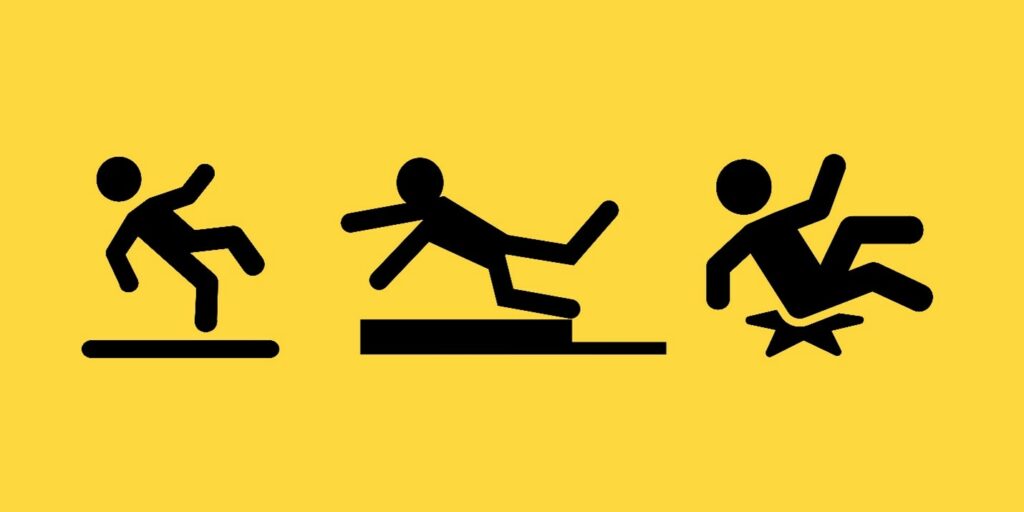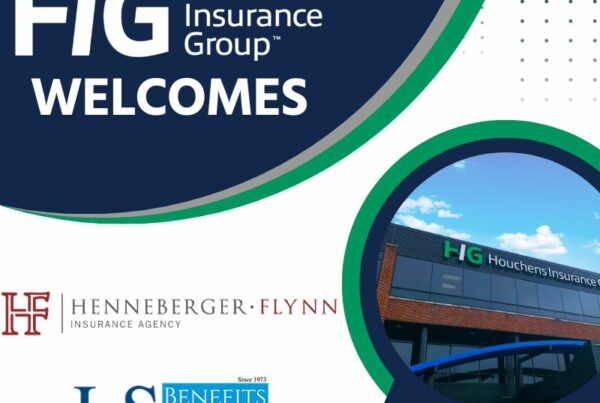Slips, Trips, and Falls. A common phrase heard in the grocery industry. It’s common because Slips, Trips, and Falls (STF) are common occurrences and a leading cause of accidents for your employees and customers. In my experience providing safety and risk management services for grocery stores, employee STF accidents account for approximately 15 to 20% of all injuries and cost around $7,500 per claim. Customer STF accidents are even more impactful. STF hazards cause sixty percent of customer accidents, and the resulting injuries account for over 80% of total customer claims paid.
Slips, Trips, and Falls left unchecked become a heavy burden on store operations; add five to ten percent to the cost of a claim, and you will get the actual monetary impact on your store.
So, what to do to protect your employees and customers? Sensing and controlling are the answers.
- Use your senses – Take a visual check of your store.
- The parking lot – Are all elevation changes (curbs, bumpers) painted yellow to identify the trip hazard? Are parking lot holes and sidewalk cracks identified and scheduled for repair?
- Entering your store – When raining, are you controlling the water accumulation on the floor with signage, a mopping policy, and monitoring by a front-of-the-store employee?
- Inside your store – Aisle ways create many STF hazards. Stand at the end of an aisle and look for any display corners extending into the aisle. Look for a pallet turned at a 45-degree angle against the parallel of other displays. If a display base has four legs, is one leg extended into the aisle? In produce, does the produce mist drop water onto the floor, or are Produce skins, such as onions, falling to the floor?
- The back room – Are your freezers showing signs of ice buildup and pallets extending into the aisle way? Are your meat and deli departments reporting STF accidents?
- How to control Slips, Trips, and Falls
- Outside your store, highlight all elevation changes by painting curbs yellow, and identify ramps and access points leading into the store. All parking lot and sidewalk damage should be repaired. When appropriate, place a barrier on the damage until repaired.
- At the storefront, appoint an employee to be in charge of identifying a slip and fall hazard. This employee’s responsibility is to place wet floor signs as needed, ensure rugs and other non-slip floor covers are in place, ensure clean mop heads are used and remove wet floor signs when there is no longer a hazard.
- Trip hazards on the sales floor, when identified, should be eliminated. For example, plastic bag dispenser stands used in the Produce department create a trip hazard at the base. Instead, consider using a display mount dispenser or placing the dispenser between two displays. The product on a floor display should be faced at the front and side edge of the pallet in the same manner as you face products to the edge of the shelves. For water and Produce skins, consider rugs or other floor covers.
- For ice buildup in freezers, inspect and replace door seals and ensure the freezer doors are closing properly. Meat and deli departments must ensure clean mop heads are used, spills are cleaned immediately, damaged floor tiles are repaired, and slip-resistant shoes are worn.
These simple steps will help in identifying, controlling, and eliminating many of your Slip, Trip, and Fall hazards found at your store.
The articlewas written by Kelly Park, a Risk Control & Safety team member at HIG.





